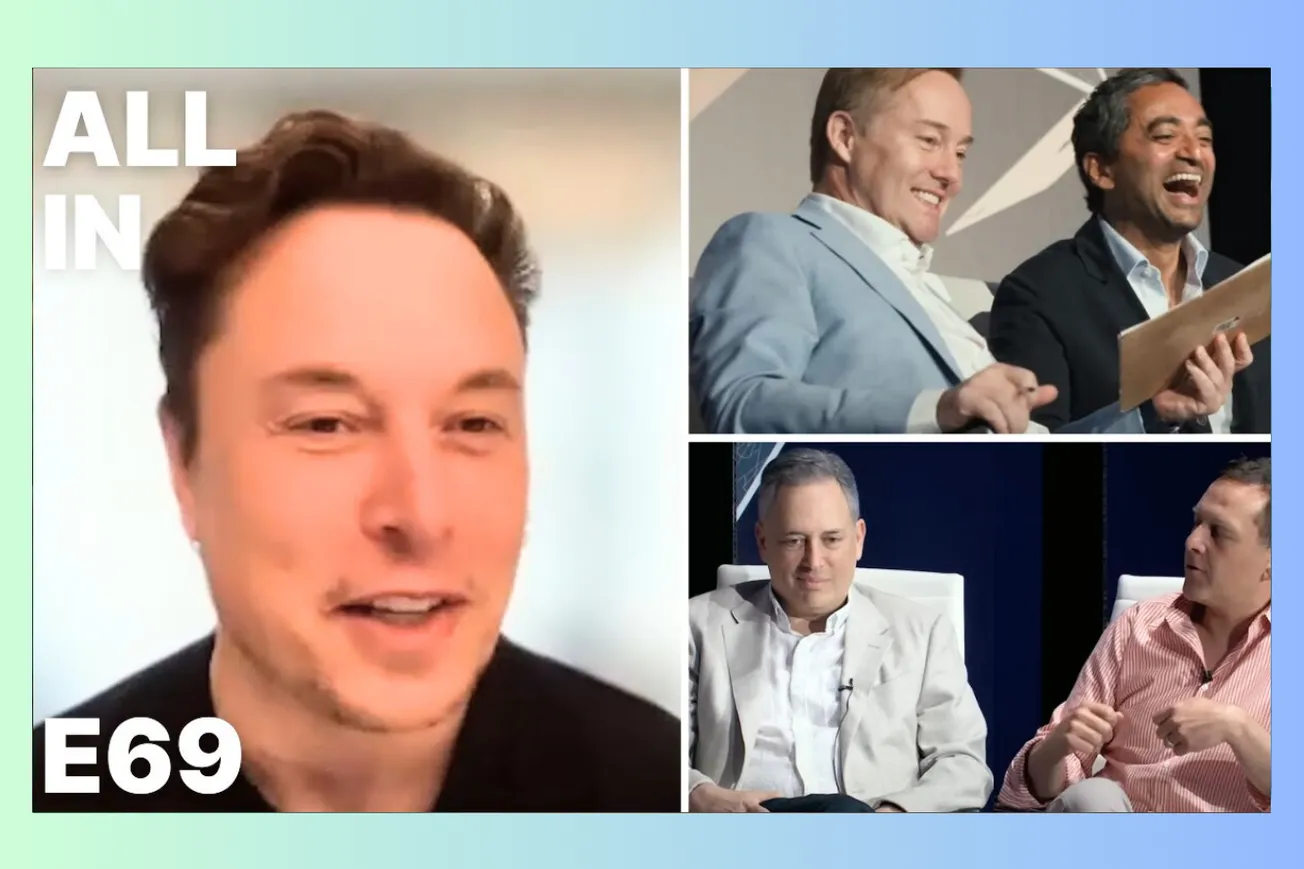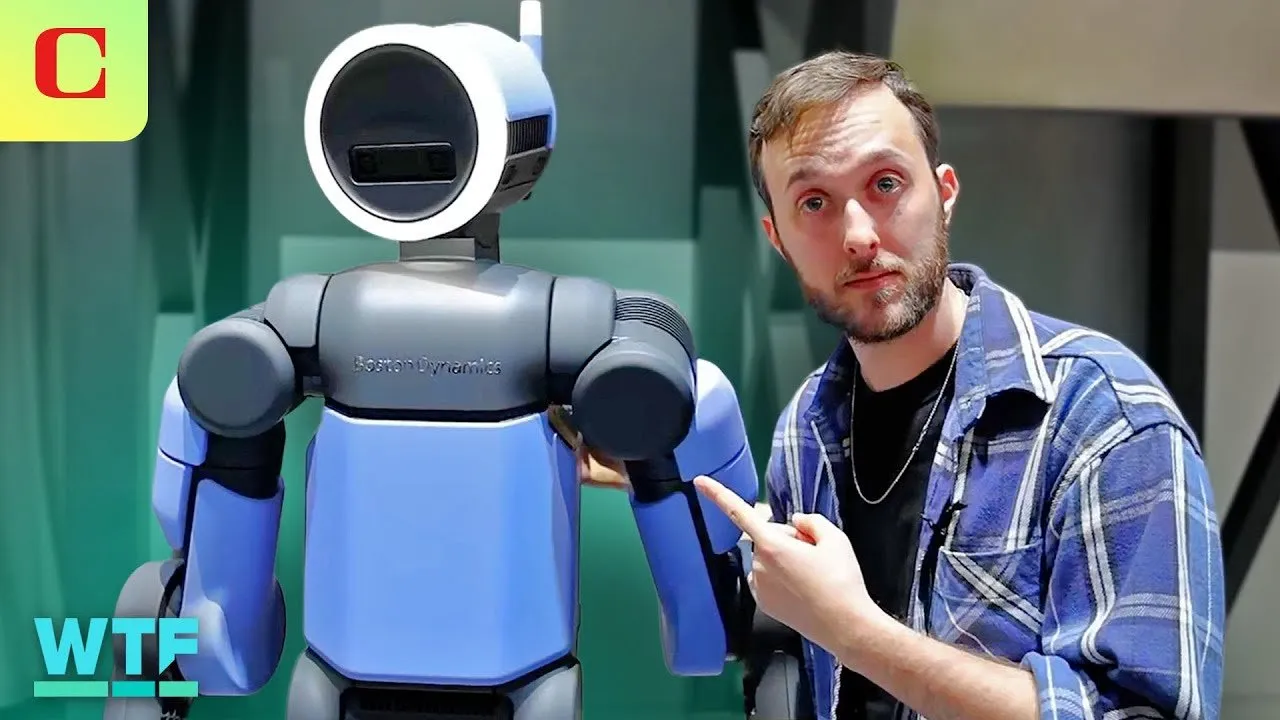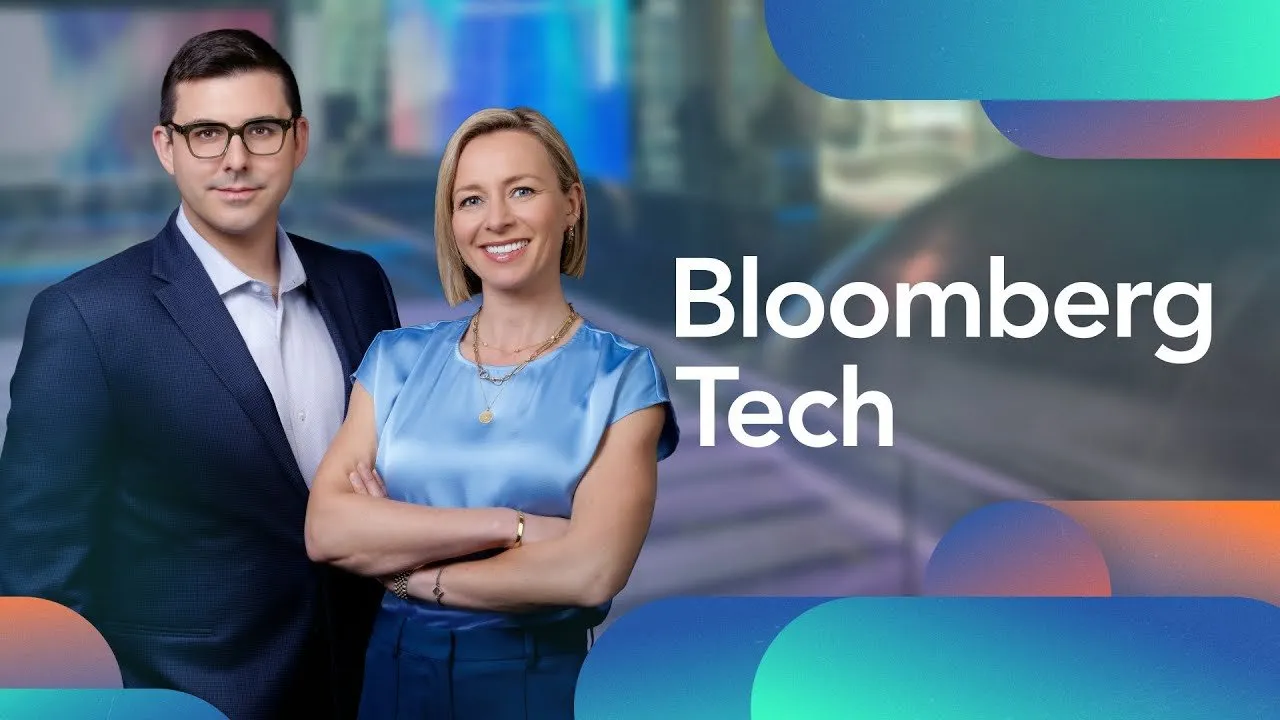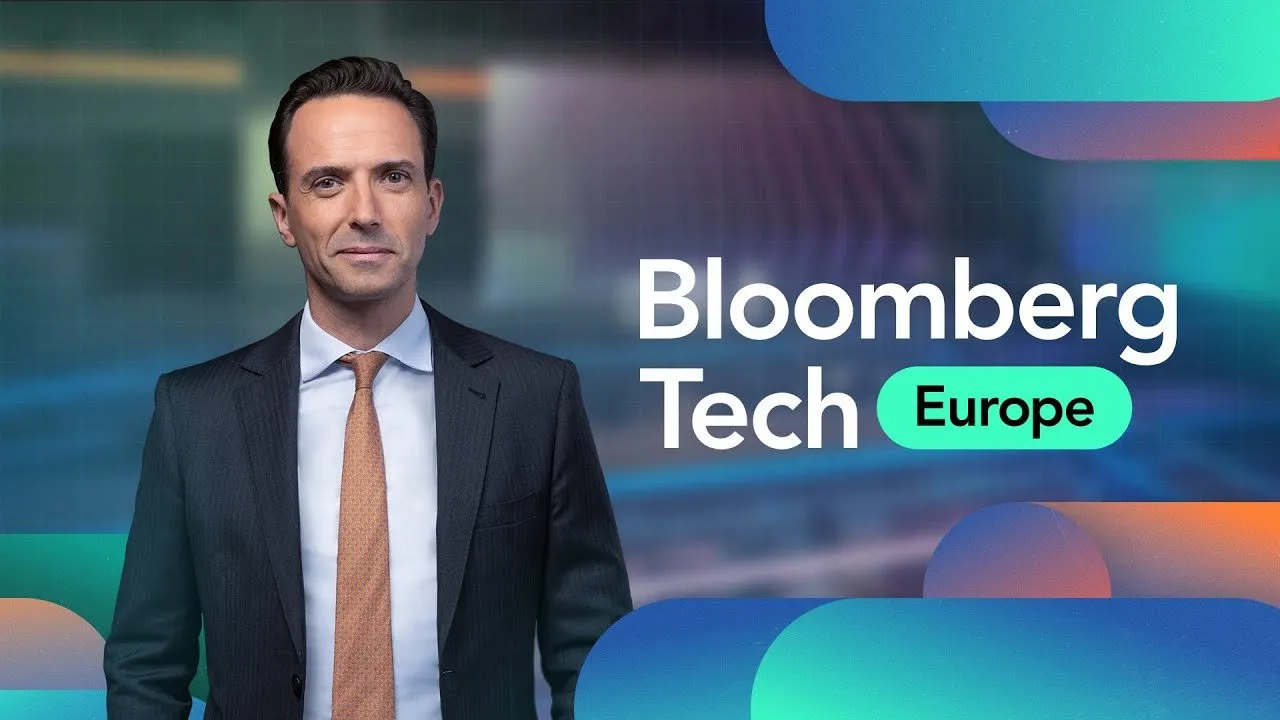Table of Contents
Elon Musk reveals Twitter's bot problem could be 20%+, discusses SpaceX's Mars funding model, Tesla's six companies, and America's innovation future.
Key Takeaways
- Twitter's bot problem could be 20% or higher rather than the claimed 5%, with external analysis supporting Musk's skepticism about user authenticity
- Tesla operates as six different companies including manufacturing, sales, supercharging network, software, AI team, and chip design rather than traditional automaker model
- SpaceX's three-step plan involves orbital cargo, Starlink profits, and using revenue to fund Mars colonization and permanent lunar bases
- Solar and wind energy can scale to power civilization 100x over without fusion, with just 100x100 miles of solar panels powering entire United States
- California's regulatory complexity makes major manufacturing impossible even for governors, requiring "infinity months" compared to Texas's 18-month gigafactory timeline
- American immigration policy needs complete overhaul to recruit global talent like professional sports teams recruit star players for competitive advantage
- Economic recession likely lasting 12-18 months will clear out inefficient companies and restore rational capital allocation after period of "raining money on fools"
Timeline Overview
- 00:00–00:43 — Bestie Guestie Introduction: Elon Musk joins the All-In Summit via Zoom with characteristic humor about hair days and sultry filters, setting relaxed tone for wide-ranging conversation
- 00:43–13:26 — Twitter Bot Problem Analysis: Deep dive into Twitter's claimed 5% bot rate versus Musk's estimate of 20%+ based on engagement data, most-liked tweets reaching only 2% of claimed user base, and comparison to YouTube metrics
- 13:26–21:42 — Tesla's Six-Company Structure: Breakdown of Tesla as manufacturing, sales/service, supercharging network, software, AI/autopilot, and chip design companies rather than traditional automaker, plus insurance and future robotaxi services
- 21:42–30:19 — Twitter Deal Concerns and Super App Vision: Discussion of material adverse changes if bot percentages are wildly inaccurate, plus vision for WeChat-style super app combining social media, payments, and content creator revenue sharing
- 30:19–39:52 — Building vs Acquiring Philosophy: Musk's preference for starting from scratch over acquisitions, early Tesla founding story corrections, near-bankruptcy experiences in 2008, and lessons about moral hazard of trying to avoid CEO responsibilities
- 39:52–56:37 — SpaceX Mars Business Model: Three-step plan from orbital services to Starlink profits to Mars colonization funding, discussion of fusion energy economics versus renewable alternatives, and civilization's declining birth rates
- 56:37–1:10:20 — California vs Texas Manufacturing: Comparison of 18-month Texas gigafactory construction versus California's impossible regulatory environment, economic recession predictions, and need for "economic enema" to clear inefficient companies
- 1:10:20–End — American Innovation and Immigration: Importance of talent recruitment for maintaining American competitiveness, criticism of both Trump and Biden immigration policies, and observations about Chinese work ethic versus American complacency
Twitter's Bot Problem: A Material Misstatement
Musk's analysis of Twitter's user authenticity claims reveals significant discrepancies between reported metrics and observable engagement patterns that could fundamentally alter the platform's valuation.
- Twitter claims less than 5% bot/spam accounts among 217 million monetizable daily active users, which Musk considers "beyond reasonable" given user experience
- External analysis from "quite smart outside firms" estimates at least 20% fake accounts, which Musk considers a lower bound rather than upper bound
- His most-liked tweet (4.7 million likes about putting cocaine back in Coca-Cola) represents only 2% of claimed daily active users, suggesting engagement inconsistency
- YouTube comparison shows billions of views on popular content from billion-user base, demonstrating more logical engagement ratios than Twitter's metrics
- The fundamental concern isn't 5% versus 7% but potentially 80-90% bots, which would constitute material adverse misstatement for acquisition purposes
- Brand advertising revenue (70% of Twitter's income) depends entirely on real human eyeballs rather than purchase conversions, making bot accuracy critical
This discrepancy matters because Twitter's business model relies on brand awareness rather than direct sales conversion, making authentic human engagement essential for advertiser value proposition.
Tesla: Six Companies in One Super-Structure
Musk detailed how Tesla operates as multiple integrated businesses rather than a traditional automaker, explaining the complexity behind the company's valuation multiples.
- Traditional automakers primarily assemble vehicles and manage supply chains, with most technology development and manufacturing done by external suppliers
- Tesla handles direct sales and service without dealership networks, creating complete customer relationship ownership from purchase through maintenance
- Supercharger network represents the world's most advanced charging infrastructure with 15,000+ stations enabling long-distance travel anywhere in America
- Vertical integration extends to battery packs, power electronics, drive units, and most internal components for speed and cost advantages over legacy supply chains
- Software development rivals tech companies with Tesla OS controlling vehicle operations, charging systems, and user interfaces entirely in-house
- Autopilot AI team represents "the best real world AI team on earth" with 100,000 beta testers and plans to expand to one million users
- Custom chip design team created specialized hardware for full self-driving computation that would otherwise require "trunk full of GPUs"
- Dojo supercomputer processes billions of miles of video training data, comparable to Google's search data advantage for machine learning
This integration strategy emerged from necessity rather than ideology, as traditional supply chain speeds couldn't match Tesla's required innovation pace.
SpaceX's Three-Step Mars Economics
Musk outlined SpaceX's business model for funding Mars colonization through profitable Earth-based services rather than relying solely on government funding.
- Step one involves developing orbital cargo capabilities and crew transport to International Space Station, servicing government and commercial launch needs
- Step two builds global Starlink satellite constellation providing internet connectivity to underserved areas, remote locations, and regions with communication disruption
- Step three uses Starlink revenue to fund permanent lunar bases and Mars colonization infrastructure, creating self-sustaining off-world civilization
- Mars city must achieve complete self-sufficiency where Earth supply ship interruption wouldn't cause civilization collapse, requiring massive resource base
- Timeline pressure comes from "great filters" including solar expansion, asteroid impacts, and potential human self-destruction through advanced technology misuse
- The race between World War III and multi-planetary life represents existential stakes requiring urgent progress on space colonization capabilities
Musk frames this as passing civilization's "great filter" test, where species either become multi-planetary or face eventual extinction from various cosmic threats.
Energy Abundance: Solar Wins Over Fusion
Despite fusion energy's theoretical potential, Musk argues renewable sources provide more economically viable paths to civilization-scale energy abundance.
- Fusion energy is "100% definitely" technically possible through scaled-up tokamak reactors that minimize surface-to-volume ratios for stable plasma containment
- Economic viability remains questionable due to expensive deuterium/tritium fuel requirements, complex heat-to-electricity conversion, and maintenance challenges
- Solar energy can power United States economy with just 100 miles by 100 miles of panels, representing "little corner of Texas or Utah"
- Scaling to 10x current economy requires minimal additional land area, while ocean deployment could support 100x larger civilization
- Earth already has "gigantic fusion reactor in the sky that just works with zero maintenance and shows up every day"
- Population decline rather than energy scarcity represents bigger civilization threat, with declining birth rates in developed countries threatening economic sustainability
The energy abundance scenario faces constraints from demographic trends rather than technical limitations, as educated, wealthy populations consistently choose fewer children.
California's Regulatory Impossibility vs Texas Efficiency
The stark contrast between California and Texas manufacturing timelines illustrates broader American competitiveness challenges in global markets.
- Gigafactory Texas took 18 months to build despite being three times the size of Pentagon, nearly one mile long and quarter-mile wide
- California construction would take "infinity months" due to regulatory agencies and litigation, with even governors unable to expedite major projects
- Single-piece front and rear casting innovation reduces Model Y body shop size by 60% compared to Model 3's 120-piece construction
- Casting machine concept came from toy manufacturing observation, with five of six suppliers saying impossible until sixth said "maybe"
- California transformed from "land of opportunity" to "land of taxes, over-regulation, and litigation" despite remaining beautiful state
- One-party Democratic supermajority eliminates political responsiveness since guaranteed electoral victories remove accountability to voters
This regulatory capture illustrates how institutional complexity can undermine even well-intentioned environmental and safety goals through implementation dysfunction.
Economic Recession: Necessary "Economic Enema"
Musk predicted recession timing accurately and frames economic downturns as necessary corrections to capital misallocation during boom periods.
- Correctly predicted recession timing for "approximately spring of 2022" during previous year's questioning about economic outlook
- Recessions aren't necessarily bad but rather correct "misallocation of capital" where "it starts raining money on fools" during extended booms
- Companies doing "silly and not useful" things for fellow humans need clearing out through "economic enema" that restores rational resource allocation
- PayPal experience in 2000 showed how quickly funding environment can shift from VCs wiring money without term sheets to complete funding freeze
- Current environment requires cash flow positive operations and capital reserves to survive irrational market periods lasting 12-18 months typically
- Federal money printing created obvious inflation through basic economics: more dollars created than goods/services output equals price increases
The recession framework emphasizes creative destruction benefits over pure economic hardship, viewing downturns as essential for long-term health.
Immigration: America's Talent Recruitment Failure
Musk criticized both Trump and Biden administrations for failing to recruit global talent that wants to contribute to American success.
- America should recruit international talent like professional sports teams recruit star players, actively pursuing people who want to join "Team America"
- Current system fights off talented individuals who desperately want to contribute rather than competing against America in their home countries
- Both administrations have maintained restrictive policies despite obvious benefits of attracting hardworking, entrepreneurial immigrants regardless of origin
- "Anyone with strong work ethic" who will" contribute more than they take" represents obvious net positive for American society and economy
- Chinese work ethic objectively exceeds American averages even within Tesla's high-performance culture, suggesting competitive disadvantage from complacency
- Immigration restrictions force talented individuals to build companies and create jobs in competitor nations rather than strengthening American economy
This talent drain represents strategic self-sabotage when America faces economic competition from countries that could become 2-3 times US economic size.
China Competition: Economic Reality Check
Musk's manufacturing experience in China provides ground-level insights into the competitive challenges America faces in the coming decades.
- China isn't monolithic but contains many competing factions with tremendous numbers of hardworking, smart, non-complacent people wanting better lives
- For first time in living memory, America will face economy 2-3 times its size, requiring serious competitive response rather than internal fighting
- Tesla China team objectively demonstrates higher work ethic than US operations despite strong American work culture compared to other manufacturers
- America needs to "stop punching itself in the face" through political infighting and focus on economic competitiveness for unprecedented challenge
- Economic competition will "blow people away" when Americans realize required competitiveness levels to match Chinese manufacturing and innovation
The scale differential represents historical shift requiring American unity and performance improvement rather than continued political division and complacency.
Common Questions
Q: Will the Twitter deal actually close given the bot problem concerns?
A: Musk indicated the deal depends on resolving bot percentage questions, with material adverse misstatement provisions potentially allowing renegotiation or cancellation.
Q: How does Tesla maintain profitability while scaling so many different business lines simultaneously?
A: Vertical integration and economies of scale create competitive advantages, while each business unit supports others rather than operating independently.
Q: Is SpaceX's Mars plan realistic without massive government funding beyond current contracts?
A: Starlink revenue generation aims to self-fund Mars colonization, though government partnership would be helpful rather than necessary.
Q: Can renewable energy really replace fossil fuels at civilization scale without nuclear power?
A: Solar and wind can scale far beyond current needs using minimal land area, with storage and grid solutions being engineering rather than physics problems.
Q: How can American companies compete with Chinese manufacturing advantages?
A: Focus on innovation, reduce regulatory barriers, improve work culture, and recruit global talent while avoiding political distraction from economic competition.
Conclusion
Musk's wide-ranging discussion reveals interconnected thinking across multiple industries and civilization-scale challenges. His Twitter analysis demonstrates data-driven skepticism about corporate claims, while Tesla's complexity illustrates how modern companies must integrate multiple traditional business functions. SpaceX's Mars economics show how profitable Earth businesses can fund seemingly unprofitable but strategically essential long-term goals. The California versus Texas comparison highlights how regulatory environments directly impact American competitiveness, while his immigration advocacy emphasizes talent recruitment as national security issue. His recession prediction and China analysis provide sobering perspectives on economic realities requiring American adaptation rather than complacency about continued global dominance.
Practical Implications
- Investors should scrutinize social media companies' user metrics more carefully, particularly engagement ratios compared to claimed active user bases
- Manufacturing companies should consider Texas and other business-friendly states over California for major facility construction to avoid regulatory delays
- Technology companies need vertical integration strategies for competitive advantages rather than relying entirely on traditional supply chain partners
- American businesses must improve work culture and productivity to compete with international operations that demonstrate higher performance standards
- Immigration policy reform represents critical economic competitiveness issue rather than purely social or political concern for maintaining innovation leadership
- Recession preparation requires cash flow positive operations and capital reserves rather than assuming continued access to easy funding during downturns





